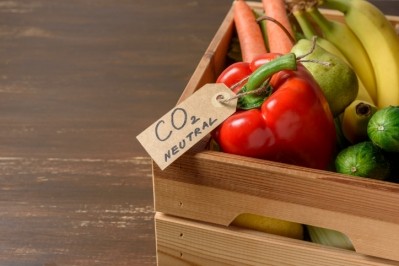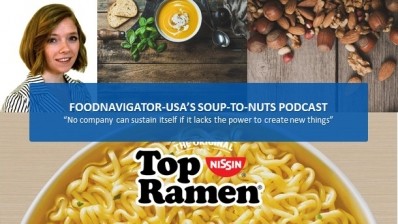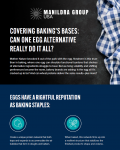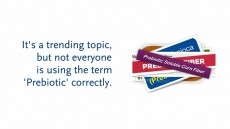Soup-To-Nuts Podcast: How do consumers think about sustainability when buying groceries?
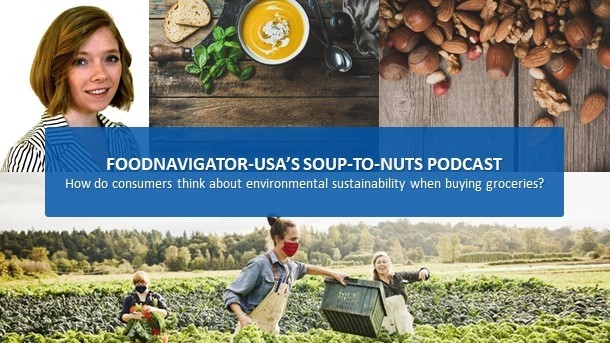
According to the research conducted by The Hartman Group, consumer interest in sustainably produced products underwent a “notable shift” in 2019 at which point 51% of shoppers said they purchased sustainable products because they were better for the environment – up 19 percentage points from 32% just two years earlier. At the same time, The Hartman Group found 63% of the population felt government and large companies should address waste and pollution and 46% wanted them to address climate and energy.
But setting sustainability goals and succinctly communicating progress towards those goals in a consumer-friendly fashion that can benefit the bottom line isn’t easy – especially when consumer engagement, understanding and passion about the topic are spread across a broad spectrum. Which is why in this episode of FoodNavigator-USA’s Soup-To-Nuts podcast we take a closer look with The Hartman Group at how consumers are prioritizing environmental sustainability, what is driving their interest in the issue and how one brand – Moonshot Snacks -- is talking about climate-change to build better businesses and a better future.
[Editor’s note: Never miss an episode of FoodNavigator-USA’s Soup-To-Nuts podcast – subscribe today.]
How are grocery shoppers prioritizing sustainability?
While The Hartman Group’s biannual sustainability and transparency research, most recently released in 2019, already shows consumer interest in environmental sustainability ticking up, the research firm’s senior vice president Shelley Balanko predicts the pandemic will further accelerate consumer interest in climate change and support for companies and brands that proactively address and strive to improve it.
She explains that Hartman researchers currently are in the field gathering data for the next update scheduled for release next month, but that consumers were profoundly influenced by the environmental impact of regional shutdowns during the pandemic as well as the direct line drawn by the outbreak between an individual’s health and that of the broader community.
She noted that during initial lockdowns “when pretty much the entire world shut down and stopped driving everywhere for a period of a few weeks, we could all attest to the fact that the air quality improved substantially and there were lots of reports of wildlife returning to urban areas. So, the pandemic made that piece crystal clear the human impact on our environment,” she said.
In addition, consumers became aware of the risks food producers face – leading to a rise of social sustainability and responsibility demands.
Balanko added that previous rounds of research also hinted at a deepening consumer interest in the impact of food production on the climate as illustrated by the shift from organic to regenerative agriculture.
Brands must balance sustainability with nutrition, flavor and value
Even though environmental sustainability is gaining importance, it is far from the number one purchasing criteria for shoppers – which is why when Julia Collins launched Moonshot Snacks’ carbon-neutral crackers from regeneratively farmed ingredients she also prioritized convenience, nutrition, flavor and value.
“I wish it was the case that climate friendly was the number one purchasing criteria for our consumers, but we’re not there yet. Most people are still looking for flavor, health and value as the top three things they are considering when reaching for a box of crackers,” Collins acknowledged.
“But,” she added, “we do know from talking to consumers that that climate-friendly aspect of our product does drive repeat purchase and referral. So, customers feel as though they’ve gotten sort of an extra dose of feel-good when they purchase our crackers,” she said.
She also notes that 55% of growth in CPG from 2015 to 2019 came from sustainably marketed products – so even though these products are only a small portion of the category, they drove a lion’s share of the growth.
Consumer education will be key to long-term change
While consumer interest in environmentally sustainability is on the rise, the degree to which individual shoppers understand and care about the issue varies greatly – creating a marketing and educational challenge for climate-friendly brands.
Balanko says the first step for companies hoping to open a conversation about or improve the food industry’s environmental impact is to know their target consumer.
“Consumers are involved in the world of sustainability along a continuum and folks who are super committed and do a lot of due diligence and research on their own are looking for a certain set of words or certifications and consumers who might be on the periphery side of things” will need different level of education, she explained.
That said even the most sophisticated consumers might not know terms like regenerative agriculture and so brands will need to breakdown a complicated concept into bite size pieces for shoppers.
No matter where consumers are on the continuum, Balanko recommends brands craft messaging that is “collegial.”
Collins strives to make Moonshot’s messaging relatable but still educational by offering different degrees of detail at different places on packaging and the brand’s website. She also notes she is open to adjusting claims to meet consumers where they are as their understanding deepens and evolves over time.
For example, on the front of each box of Moonshot Crackers, is a climate-friendly pledge wrapped around the brand’s logo. For consumers who want to learn more, the company breaks down how their product is climate-friendly on the back of pack by explaining in clear, simple terms what regenerative agriculture is.
“We did a recent survey with consumers and what’s really resonating is that nearly half of our consumers, 44% actually, learned about regenerative agriculture from Moonshot,” with many choosing to investigate and learn more on the brand’s website and elsewhere, Collins said.
As important to Moonshot Snacks as its environmental message is, Collins acknowledges the brand’s marketing still needs to hit the fundamentals of what it is offering from a nutrition and taste point.
Be transparent about sustainability goals and progress
Just as consumers are at different points on the sustainability continuum so too are companies – and even if a brand isn’t as advanced as Moonshot Snacks, Balanko says they can still talk to shoppers about what their environmental goals are and where they are at in achieving them.
“Consumers don’t expect companies to be perfect today. They just want to understand where you are at, what you stand for, and how you plan to affect change – and then be open and honest about your progress towards those goals,” she said.
But setting sustainability goals – and charting a course to achieve them – is hard, which is why Collins developed software to help companies navigate this path.
“At Planet FWD, we’ve developed software that just reduces the cost and the complexity of bringing carbon neutral and climate-friendly products to market. We’ve developed the fastest and most efficient way to model emissions for food products and companies and the benefit to our users is that they can actually understand their carbon footprint and make emission reduction plans faster and easier than ever before,” she said.
Ultimately, while the food industry has already made significant strides, it still has a long way to go to make environmentally sustainable diets the easy and healthy choice – but Collins and Balanko say they are optimistic that both understand the urgency and are taking steps to make it a reality.

